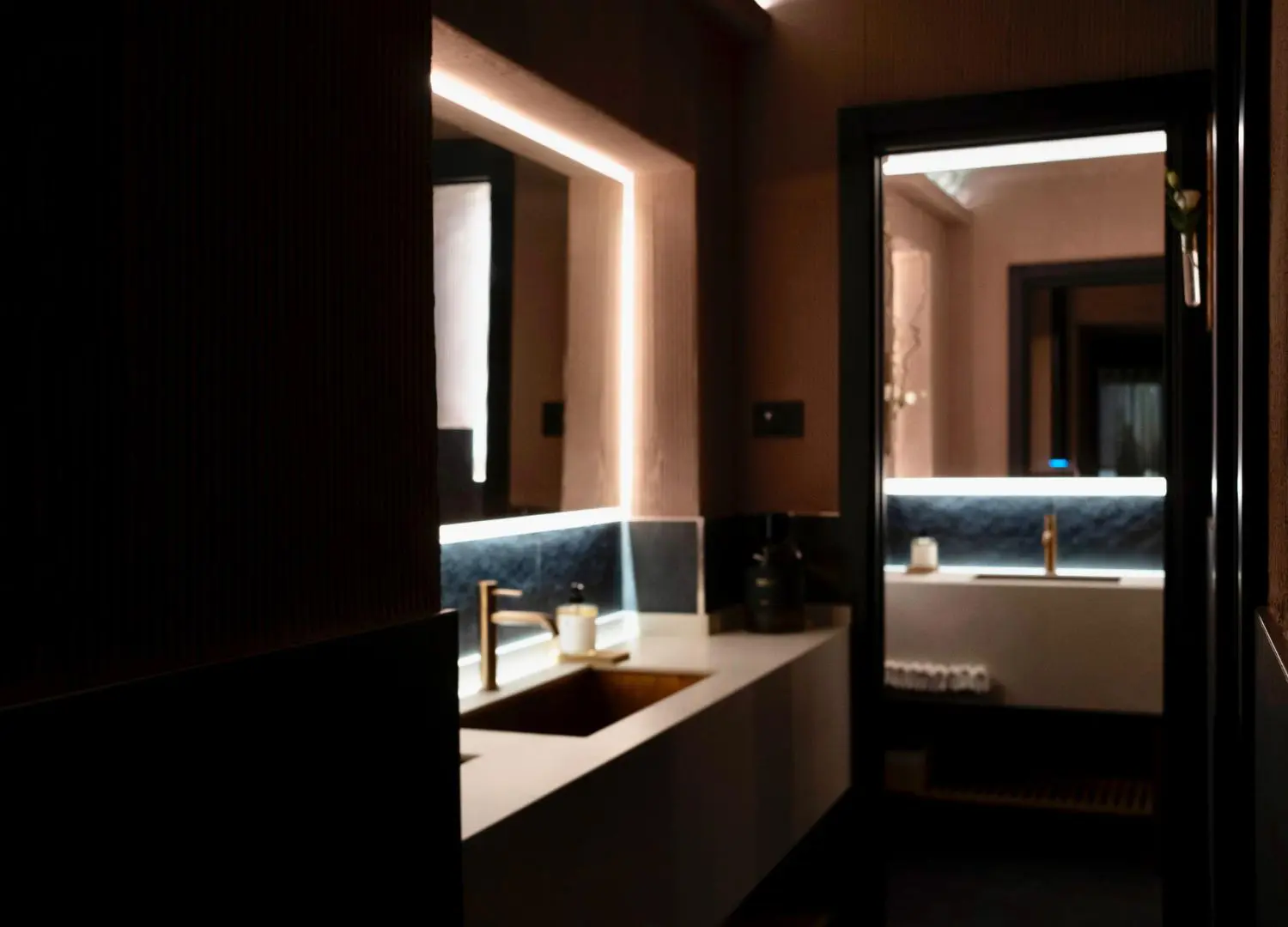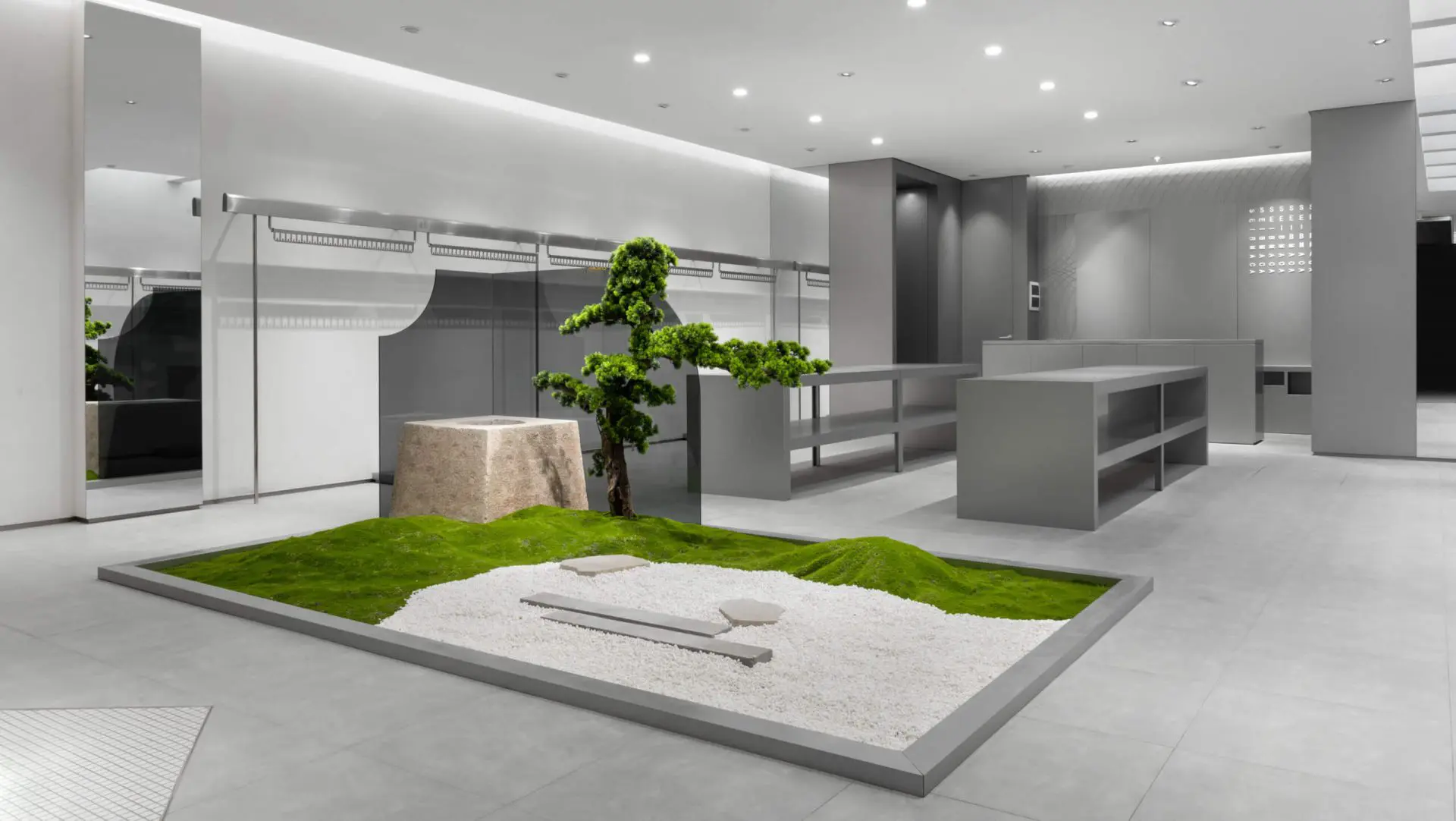In the age of intimacy famine, Ruri Kaiseki masters meaningful dining
Spearheaded by Takeda Katsuya Design, Naples’s Ruri Kaiseki restaurant is a place of tenderness and togetherness. Diners are embraced by a magnetic medley of Italian flair and the Japanese philosophy of Kaiseki.

The flow of Ruri Kaiseki revolves solely around a 12-seater dining table. An intimate gathering of guests gazes at the chef’s show-cooking space and marvels at the transcendent techniques of Japanese culinary art. A soft and subtle glow creates a theatre-esque ambiance as the culinary master’s silhouette and his precise shaping of every dish are spotlighted soothingly.
Located in the heart of Naples, just a short walk away from Piazza dei Martiri, the restaurant is the work of renowned architect Takeda Katsuya. Visitors indulge in a feast for all the senses–a symbiosis between flavors and the art of presentation, attributed to the Japanese philosophy of Kaiseki, a high form of Japanese gastronomy that combines taste, aesthetics, and seasonality of ingredients.

Born in Kumamoto, Japan, Takeda Katsuya moved to Italy in 1998 to study architectural design. Almost three decades later, “Design Atmosphere” has become the nucleus of his practice: a continuous search for shapes, colors, and materials as a means to create moods that trigger exact sensations. Celebrated for his unique ability to blend traditional and contemporary design methods, Katsuya routinely dares to experiment with visual concepts as he strives to meet the practical needs of both a space and its protagonists.
His Milan-based eponymous design studio explores the realms of architecture and interior and product design. Each environment Katsuya molds mirrors the client’s identity, values, and style. As such, Ruri Kaiseki, the outcome of a collaboration between an Italian entrepreneur and Katsuya that set about in 2023, is a space that deeply reflects the culinary and aesthetic essence of Japan.

Ruri Kaiseki’s entrance is characterized by the architectural element of the Koushi-Do, a wooden lattice. The sliding doors that separate the main dining area from the kitchen are embellished with a Noren, a curtain made of raw linen, used to decorate the wall, which is covered in rough white plaster, conveying the minimalist appeal of Japanese surfaces.

Marked by its dark and sophisticated layering tones, the restaurant’s interior is a gentle amalgamation of noir, beige, and gray hues. An accentuating touch of color is found in the presence of Ruri, the stone from which the restaurant takes its name and upon which every dish, in deep navy blue, is placed. Ruri means “lapis lazuli”, a symbol of beauty and purity, and enhances and elevates meals with its refinement. Ruri’s navy blue shade also pays tribute to Naples as a city infused with a Mediterranean soul.

The 80-square-meter dining space, with its high, 6 meters-tall ceilings, welcomes gastronomers into a suave setting devoted to the authentic flavors of traditional Japanese cuisine. The wooden counter table, inspired by the Japanese Nō theatre, fuses with the central structure crafted from Neapolitan tuff, a covering material that evokes the traditional Japanese Oya-Ishi stone. Delicate and discreet light points are elegantly integrated into the counter, designed to tactfully illuminate.
When crafting the material formula for Ruri Kaiseki, Katsuya intertwines Japanese stylistic influences with a selection of European materials. The internal European coating with dark tones, chosen to mimic traditional Yaki-Sugi, is also known as burnt pine. Widely used in Japan for exterior cladding due to its enhanced durability, fire-resistant, and waterproof qualities, this material is reinterpreted for the interior and offers a touch of tradition enriched by modernism.

Ruri Kaiseki also honors the Japanese technique of Kintsugi, an artistic means of restoration. Ceramic cups are repaired by highlighting the break lines with gold dust. In the restaurant, this technique can be witnessed within the resin concrete flooring deliberately designed and created with visible cracks. In this way, every fragile line turns into an enriching detail.
At its most rudimentary, Naples’s Ruri Kaiseki restaurant renders a multifaceted sensory experience with its identity rooted in the notion of closeness, of meaningful dining. Whether dazzling eaters’ tastebuds or setting the pace for tender conversations, it is a place where every detail makes a lasting impression.











